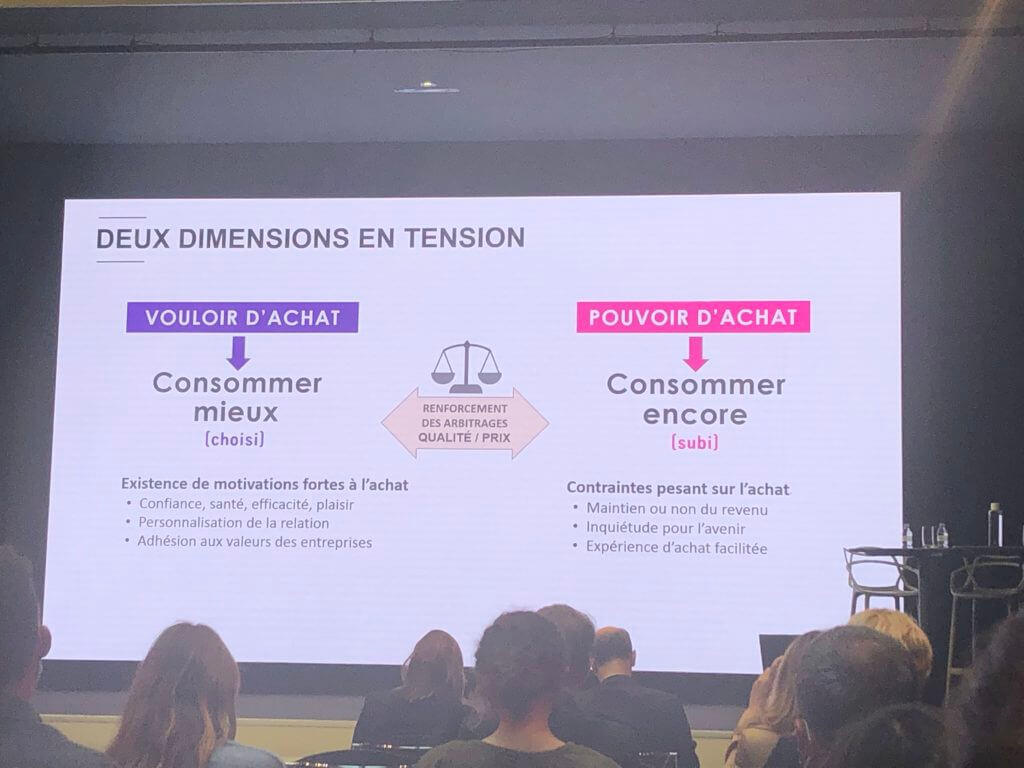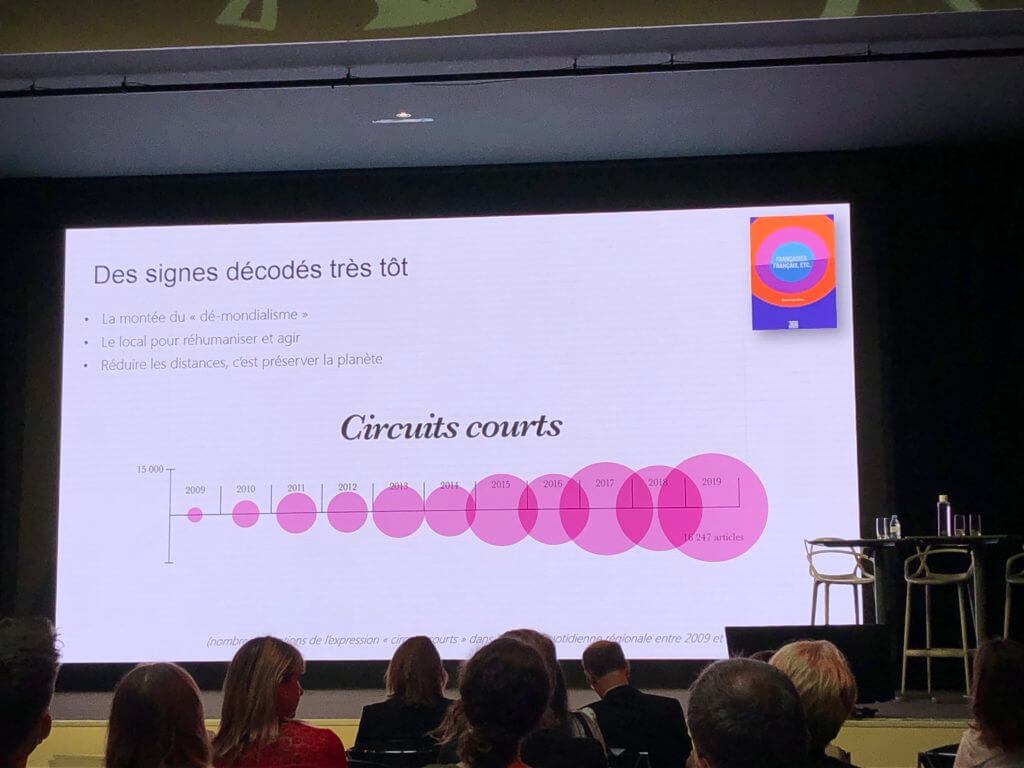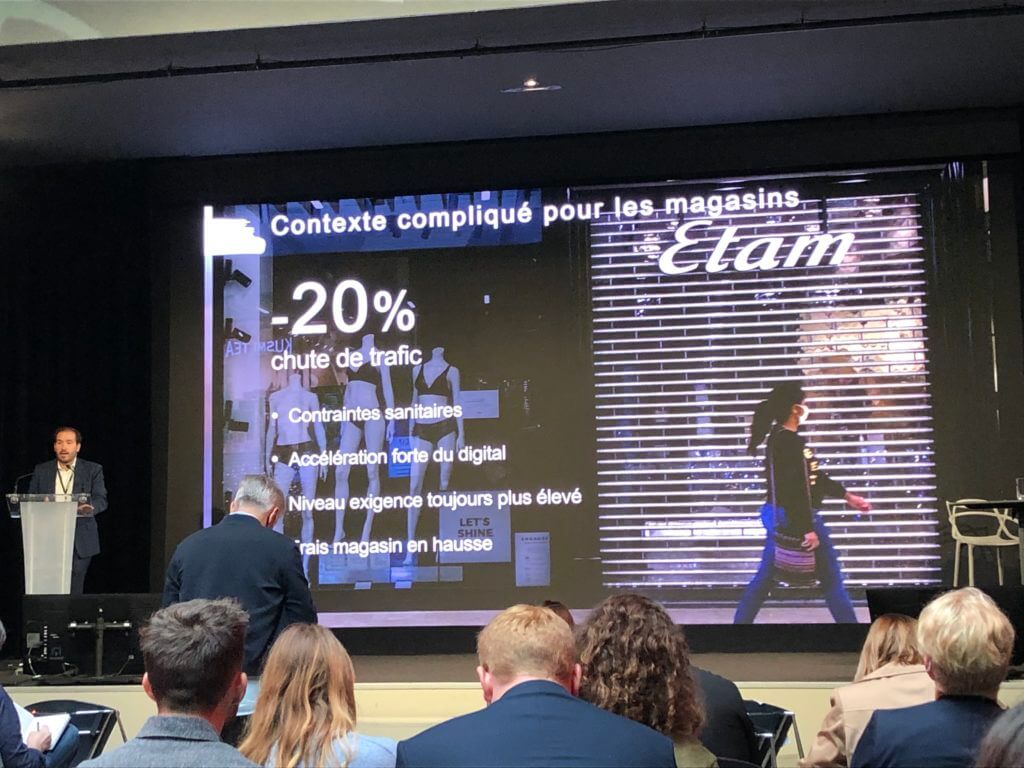
As I did last year, I attended the Stratégies Summit live from the Pavillon Gabriel in Paris to decipher the latest trends in the sector.
This 10th edition, which focuses on " The new proximity of brands ", really caught my attention, thanks to the quality of the testimonials, which is the real added value of this retail event.
The major themes that are clearly the new priorities for brands as they emerge from the crisis - " Local, Omnichannel and Authenticity " - are reflected in the feedback from the guest brands. These include L'Oréal, Accor and Etam, to name but a few, as well as the players who support them in their digital strategies: TF1 Media, 366 and Criteo.
This 360-degree vision gives us a good overview of market strategies and innovations.
An inspiring morning
Opened by Elise Ducret, Chief Marketing and Digital Officer at l'Oréal, the conference begins with a portrait of the new consumer, also known as the "Post Covid" consumer.
Consumption patterns have changed, driven by Millenials, and new trends are emerging:
- The desire to consume better. Typically, in the beauty sector, the Clean Beauty phenomenon affects over 40% of the French population. And the movement doesn't stop with the product. In fact, it embraces simple communication, a clear, transparent message with no promises.
- Facilitated and committed consumption, deployed thanks to new technologies (interaction, personalized advice) responding to an expectation of increased responsibility (in other words, social and environmental responsibility ++).
- Humanization! In the face of increasing volumes of conversation (#Tik Tok), the time has come to move from one-to-many to one-to-one; everything is a pretext for conversation, including internal human resources. employed vocacy is everywhere!
The portrait is rounded off by an astonishing slide comparing two dimensions of purchasing behavior: willingness to buy and purchasing power.

LOCAL - "the return in force of the local, both more ecological and more reasoned for our daily needs".
The first theme of the show revolves around 3 exciting presentations.
I. Integrating local growth into strategy by Antoine Dubois, Marketing & Customer Experience Director, Southern Europe, ACCOR
The group represents no fewer than 40 different brands working on local implementation.
To better understand, Antoine Dubois recalls how the hotel business was disrupted by the arrival of the Airbnb platform, which in just a few years demonstrated customers' appetite for connection and locality. The conclusion is simple and clear-cut: we had to "rethink things."
The main challenge was, and still is: how can the hotel industry attract locals? How can we create hybrid venues? Living spaces throughout the network, etc.
The Group's strategy is based on 2 main pillars:
- Authenticity, i.e. the moments, the creation of experiences, very much felt on social networks by the way. A strong, brand-by-brand approach to attracting local customers.
- Responsibility and sustainability. This pillar mainly concerns the local sourcing of catering services offered by hotels. This was a huge undertaking based on 9 commitments to healthy, sustainable food, precipitated in particular by the Covid crisis. Indeed, suppliers had to be encouraged and incentivized to source locally, as ACCOR was simultaneously developing a staycation offer for customers in search of authentic experiences.
Alongside this, the arrival of teleworkers has also prompted the Group to remodel ground-floor spaces into workspaces (in any case, the traditional "Reception" is no longer up to date when you can check-out at the bar!), transform a lobby into an events space, build coffee shops and rooftops, and integrate new catering concepts...
Find out more about the development of WOJO SPOT.
Lastly, as will be seen throughout the presentations, to accompany these transformations, we have had to "change the mindset of employees" in the way we welcome locals versus foreign tourists. HR strategy is also being challenged to recruit locals and develop their employability.
In conclusion, the implementation of a local approach is beginning to bear fruit: between 7% and 40% of the Group's hotels operate with local customers.
The icing on the cake is when Antoine Dubois shows us the spot for the latest concept: GREET or "second-chance hotels" (notably in deal with Emmaus). A must-see!
II. A lasting trend by Stéphane Delaporte, General Manager, Régie 366
The presentation begins with a brief look at the birth of "local": its origins lie in a feeling of abandonment of the regions, a structural fact. Then comes a very real economic gap between the urban center and the regions, creating a feeling of frustration.
73% of French people would like governments to give priority to a policy of regional recovery and to local priorities.
In this respect, the concept of " relocalization " is emerging and affecting all sectors.
The LOCAL MATTERS phenomenon is even global. It's a borderless movement of territorial demands, "sublimated" by the crisis. Considered a major issue in the same way as CSR or gender equality, it encompasses local issues.
From then on, and brands have understood this, we have to respond to the demand for local recognition.
366, as a content creator, and therefore immersed in the heart of brand advertising campaigns, shares with us an overview of the fashionable terms "short circuits, relocalization".

Stéphane Delaporte insists: "Local issues have an impact on the whole of society, including brand communications. Stances and postures are expected, and we can see that sometimes brands are more efficient than politicians.
The appropriation of "local" in advertising campaigns is proof of this. A powerful vector for success, it can generate purchase intentions of up to +30%.
III. Local and omnichannel, how the TV medium is reinventing itself by Dimitri Marcadé, Sales Director, Independent Agencies & Business Development, TF1 PUB
A testimonial from the media side on the impact of these new trends and the responses to audiences' new expectations.
Indeed, one wonders how the king of media (TV) has reinvented itself to continue to offer brands (advertisers) the right advertising packages.
Dimitri Marcadé is quick to announce: "TV is an online sales booster". Acting as a driver or springboard, brandformance puts on a show (a contraction of branding + performance).
41 million cyber-shoppers today, proving once again that the consumer has definitely changed. He cites an example ofomnichannelity: the arrival of the QR Code in TV advertising, particularly for pure players who are unfamiliar with TV and its power.
FOCUS on segmented advertising
TF1 PUB is surfing the wave of innovation with the arrival of personalized advertising spots. In concrete terms, a local advertiser will broadcast its commercials to an equally local clientele.
The potential is very strong, with 3.5 million households that can be segmented (using a box). A promising future and limitless creativity thanks to the power of the TV medium and the granularity made possible by digital.
To take things a step further, TF1 has signed a partnership with leboncoin Publicité, which will enable it to introduce these new offers to local advertisers. A fine example of the partnership between the two groups to reinforce their proximity strategy.
OMNICANAL - "Simplifying the purchasing path, fluidity, new channels... all roads lead to the consumer".
Let's move on to the second theme, supported by two new contributions:
I. Omnichannel at the heart of the company by Benjamin Durant Servoingt, Chief Operating Officer, Etam Group.
An account of the Etam group's omnichannel implementation, showing in concrete terms the bridges between digital and stores, and vice versa.
The group's objective is set: to offer a unified, seamless customer experience.
Historically, Etam distributes in stores (over 1,500 points of sale), then launched its e-commerce site in 2000.
By way of introduction, Benjamin Durant Servoingt poses a number of questions: how can a traditional group implement omnichannel? How can we maintain the economic equation between retail and the web when fewer and fewer customers are coming to our stores? What is the role of the store in tomorrow's world, with the arrival of the DARK STORE, and how can we take an interest in this model?

Convinced that the store and digital are enriched by a technological foundation that needs to be built, he gives us an in-depth vision of the group's omnichannel strategy.
Initially, to boost the performance of digital thanks to the store (previously we saw that it was possible to boost digital thanks to TV!), he outlines two strategic levers:
- Develop the ship-from-store concept to maximize product availability and accelerate delivery times.
- Relying on conversational shopping: sales hostesses become vectors CRM, customer service agents and handle part of the remote sales.
With sales performance superior in-store, Etam strategically decided that it was essential to put the store back into the customer journey (in other words, force the point of contact in-store). But to bring web customers into the store, we need to minimize all the friction points specific to physical point-of-sale.
So this time, we're taking our inspiration from the logic of the digital to implement them in stores:
- We're thinking of in-store QR codes directly on "product" labels to enable customers to find information on manufacturing or videos about the brand.
- We're rethinking the way we collect cash: cash in anywhere in the store, or even in the booth.
- We act on sales teams: augmented sales hostess, in-store web basket relaunch!
Here again, the Group needs to do some fundamental work: get sales teams to change, as they have come to see digital as an enemy; change the mindset by providing support through e-commerce incentives and training...
Ultimately, it's a demonstration of a virtuous approach for both digital and the store.
II. Web to store + store to web to generate repeat purchases and loyalty by Nicolas Rieul, Managing Director France & Industrial Relations Europe, Criteo
Feedback from one of France's biggest retargeting companies. Based on analyses carried out by Criteo, which operates on behalf of no fewer than 22,000 e-tailers, we can see that the consumer who spends the most and is the most loyal - in other words, the customer every brand dreams of having - is the omnishopper ! Over a 90-day period, the omnishopper consumes more: 3.8 purchases versus 2.2 for the in-store customer and 2.7 for the web customer.
The key is to maximize the most profitable omnichannel experience.
In this respect, and during the demonstration, our contact gives the brands the following advice
- Identify customers
- Using the first party data
Here are two case studies from Criteo:
In web to store, Cyrillus earned +3 million euros in 3 months by running a campaign to find the nearest store.
In store to web, Micromania wanted to convert its customers to the web, particularly during the crisis when sales outlets were closed. Thanks to the data collected by their loyalty program, the campaign was able to bear fruit and lead customers towards omnichannelity.
See you next year for new adventures!
By Sarah Carbel

